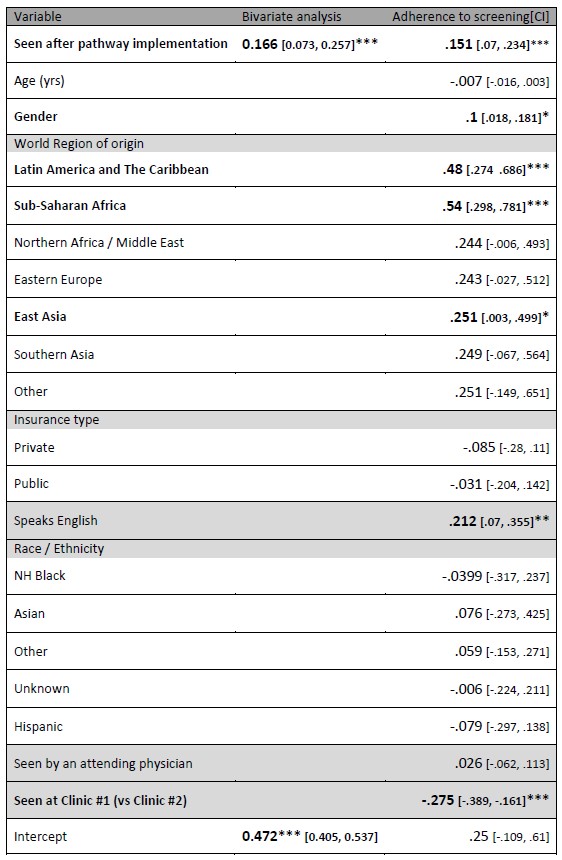Health Equity/Social Determinants of Health
Health Equity/Social Determinants of Health 7
665 - A Clinical Pathway Improved Rates of Biomedical and Infectious Screening for Newly Arrived Immigrant Children at Two Primary Care Clinics
Sunday, April 30, 2023
3:30 PM - 6:00 PM ET
Poster Number: 665
Publication Number: 665.318
Publication Number: 665.318
Anahi V. Strader, Boston Children's Hospital, Boston, MA, United States; Jackie Hsieh, Boston Children's Hospital, Newton, MA, United States; Kim Wilson, Boston Children's Hospital, boston, MA, United States

Anahi V. Strader, MD (she/her/hers)
Global Health Fellow
Boston Children's Hospital
Boston, Massachusetts, United States
Presenting Author(s)
Background: Immigrant children often experience inequities that threaten their optimal biopsychosocial health. While refugees and other immigrants undergo thorough medical screening before entry to the U.S., many others do not have any medical evaluation before arrival. Appropriate screening upon immigration is paramount to identify and appropriately treat communicable and non-communicable diseases. We implemented this project in Boston, MA, where 6% of all children are foreign-born.
Objective: We aimed to improve biomedical and infectious screening rates among newly arrived immigrants in two primary care clinics.
Design/Methods: We developed a clinical pathway based on national and international guidelines for screening new immigrant patients, incorporating expert consensus from immigration and infectious diseases experts. The pathway delineates recommended psychosocial, developmental, biomedical, and infectious screenings by world region of origin. An electronic medical record (EMR) order set was implemented as an adjunct tool. Our primary outcome is the percentage of the recommended tests each patient obtained during their first primary care visit. We used a multivariate linear regression model to measure the association of the pathway implementation to our main outcome.
Results: Our sample included 230 observations of first-time primary care encounters between December 2018 and March 2020; 48% took place before the rollout of our interventions in August 2019. We observed that establishing primary care after the pathway implementation is associated with a 15 percentage-point increase in the ordered screening tests (95%CI [7, 23.4]), controlling for various sociodemographic factors. Other variables significantly associated with higher screening rates were female gender (95% CI [1.8, 18.1]) and English as a preferred language (95% CI [7, 35.5]). Additionally, 75% of the tests’ orders were entered using the order set. Since the implementation, we have identified several cases of hemoglobinopathies, latent Tuberculosis, intestinal parasitosis, one case of Strongyloidiasis, and one of Malaria.
Conclusion(s): A clinical pathway to care for newly arrived immigrant children increased region-specific recommended biomedical and infectious screenings and allowed for early identification of communicable and non-communicable diseases. An order set embedded in the EMR facilitated the implementation. Female gender and speaking English were also significantly associated with higher screening rates. The latter finding correlates with published evidence indicating that language barriers decrease healthcare quality.
.jpg)

